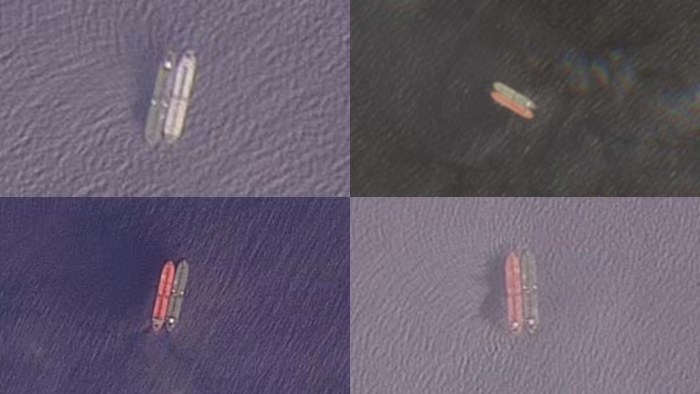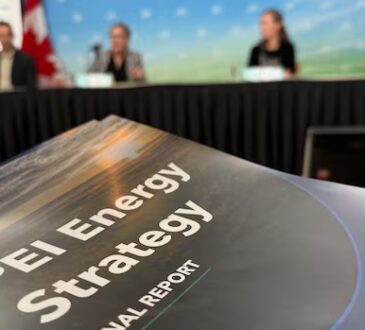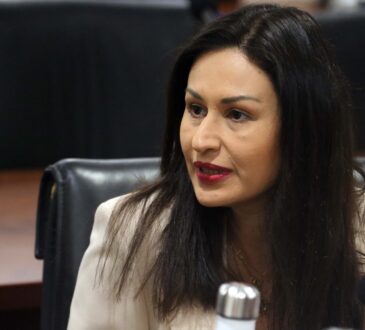
Steel tycoon Lakshmi Mittal’s energy joint venture in India has bought Russian oil transported on sanctions-listed vessels, according to an analysis of satellite imagery, shipping data and customs records by the Financial Times.
The Guru Gobind Singh Refinery in Punjab, a major oil refinery co-owned by the long-term UK resident’s Mittal Energy, received at least four crude shipments worth almost $280mn this year which had been transported most of the way from Russia on sanctions-listed ships.
The oil was transported on the US-blacklisted vessels between July and September from the Arctic port of Murmansk to as far as the Gulf of Oman. The final leg of the journey into India was undertaken on the Samadha, a tanker that is not on US sanctions lists, though it was blacklisted by the EU.
All of the ships involved in the process sought to conceal their behaviour with a combination of deceptive practices, either shutting off their transponders or using them to broadcast false positions.
It is not known who arranged for the oil to be transported on the sanctioned tankers, nor if HPCL-Mittal Energy Limited (HMEL) — the entity that owns the refinery — was aware of the use of the vessels.
Emily Kilcrease, a director at the Centre for a New American Security and a former US trade and security official, said: “If I were advising the buyer, I would want to make sure that you had enough visibility in the full transport chain to make sure that you’re not one hop or two hops from a sanctioned activity.”

Best known as the executive chair of ArcelorMittal, the world’s largest integrated steel and mining group, Mittal has built a globe-spanning business empire. The billionaire, who has sat on the board of Goldman Sachs since 2008, told associates earlier this year that he intends to leave the UK over changes to its taxation rules.
The revelations about the shipments come as the US is seeking to raise the pressure on Indian companies not to buy Russian oil. Washington last week imposed sanctions on Rosneft and Lukoil, Moscow’s two leading oil producers, in an effort to force Russian President Vladimir Putin to engage in negotiations with Ukraine.
HMEL is a joint venture between part of the Mittal group and Hindustan Petroleum Corporation Limited, an Indian state company, with each holding a 49 per cent stake. The remaining 2 per cent is in the hands of financial institutions, according to the company.
HMEL and Mittal did not respond to requests for comment.

Before last week’s US sanctions, western allies of Ukraine had already imposed a price cap aimed at limiting the profits Russia was able to reap from the trade. Oil tankers that did not comply or used various deceptive shipping practices have also been sanctioned by the EU, UK and US.
India has become one of the biggest importers of Russian crude after Putin launched the full-scale invasion of Ukraine in February 2022, profiting from discounted prices as western buyers turned away.
Russia has exported an average of 5mn barrels a day of seaborne crude this year, with 1.7mn b/d of the total being purchased by India, according to data analytics group Kpler. The next largest share headed to China.
Kilcrease said: “The major consumers of this oil really want [it]. They’ve been willing to take a certain amount of risk of coming into the US Treasury’s sights.”
The four deliveries identified by the FT all followed a similar pattern, with the Samadha repeatedly heading in and out of the port of Mundra in Gujarat, western India, to pick up the oil brought to the area on the sanctioned ships.
According to its transponder signals, the Samadha was simply travelling back and forth from Oman, where it would moor and load. After a pause, it would then broadcast that it was sailing back to India.
The vessel, however, was often not where it claimed to be. Satellite images analysed by the FT throughout this period and compared with transponder data show that, once the Samadha left port, it often sent a falsified position that disguised its true location.
While it claimed to be on these shuttle runs to Oman, the Samadha was actually meeting the other ships further offshore. Each of the four journeys included a meeting with another ship caught on satellite images.
Each image shows a large, grey vessel, consistent with the Samadha, at anchor in the Gulf of Oman, lined up side-by-side with another tanker. This position suggests a ship-to-ship transfer of goods.
The vessels appear to be the Belgorod, Danshui, Dignity and Primorye — all of which had been added earlier to sanctions lists by the US. The images of the vessels match other images of these ships obtained by the FT.
TankerTrackers, a maritime intelligence company, confirmed the identity of the ships during their monitoring of the Gulf of Oman — an area that they usually surveil for ship-to-ship transfers involving Iranian oil.
In each case, the sanctions-listed ships sailing from Murmansk went “dark” as they approached the Gulf of Oman, switching off their transponders for between three and six days, the exact window during which each photographed transfer took place. They turned them back on again shortly after.
The dates of the Samadha’s journeys also match customs records filings, seen by the FT, made by refinery owner HMEL to Indian authorities for purchases from Varda LLC, a St Petersburg oil supplier. Three of the forms explicitly name the Samadha as the carrier.
The filings also report that the four shipments had a total value of $277mn.
The records also indicate that all of the shipments were for two grades of Arctic oil — Novy Port and Arco. In January, the US targeted Russia’s Arctic oil business with sanctions, announcing curbs on tankers and other infrastructure affecting Arco and other grades.
Guru Gobind Singh refinery, located in the Bathinda area of Punjab, is the 10th largest in India, able to process 11.3mn tonnes a year. At Mundra, the crude shipments were deposited into a 1,000km-long pipeline to the inland refinery.
The FT was unable to contact the Samadha’s registered owner and manager, Erika Freight Limited, a company about which almost nothing is known beyond its relationship with the vessel.
The Samadha has since been placed under sanctions by the UK. Its owner shares a registered address in the Seychelles with 13 other so-called shadow fleet vessels — ships against whom it is difficult to enforce sanctions because their ownership is opaque.
The FT was not able to reach Varda LLC in St Petersburg, which does not have any online presence and does not list any contact details in Russian corporate records.
Cartography by Aditi Bhandari




